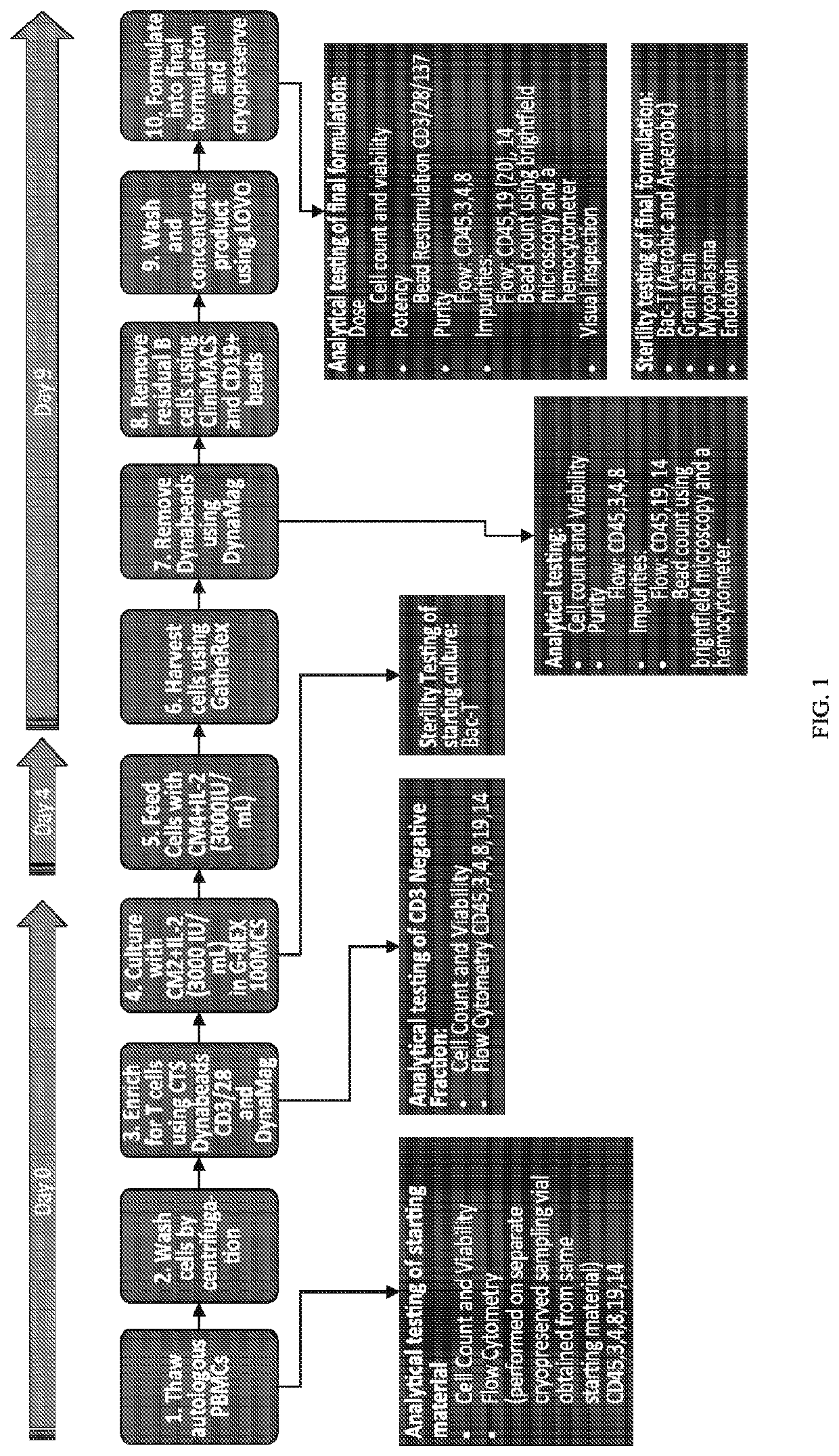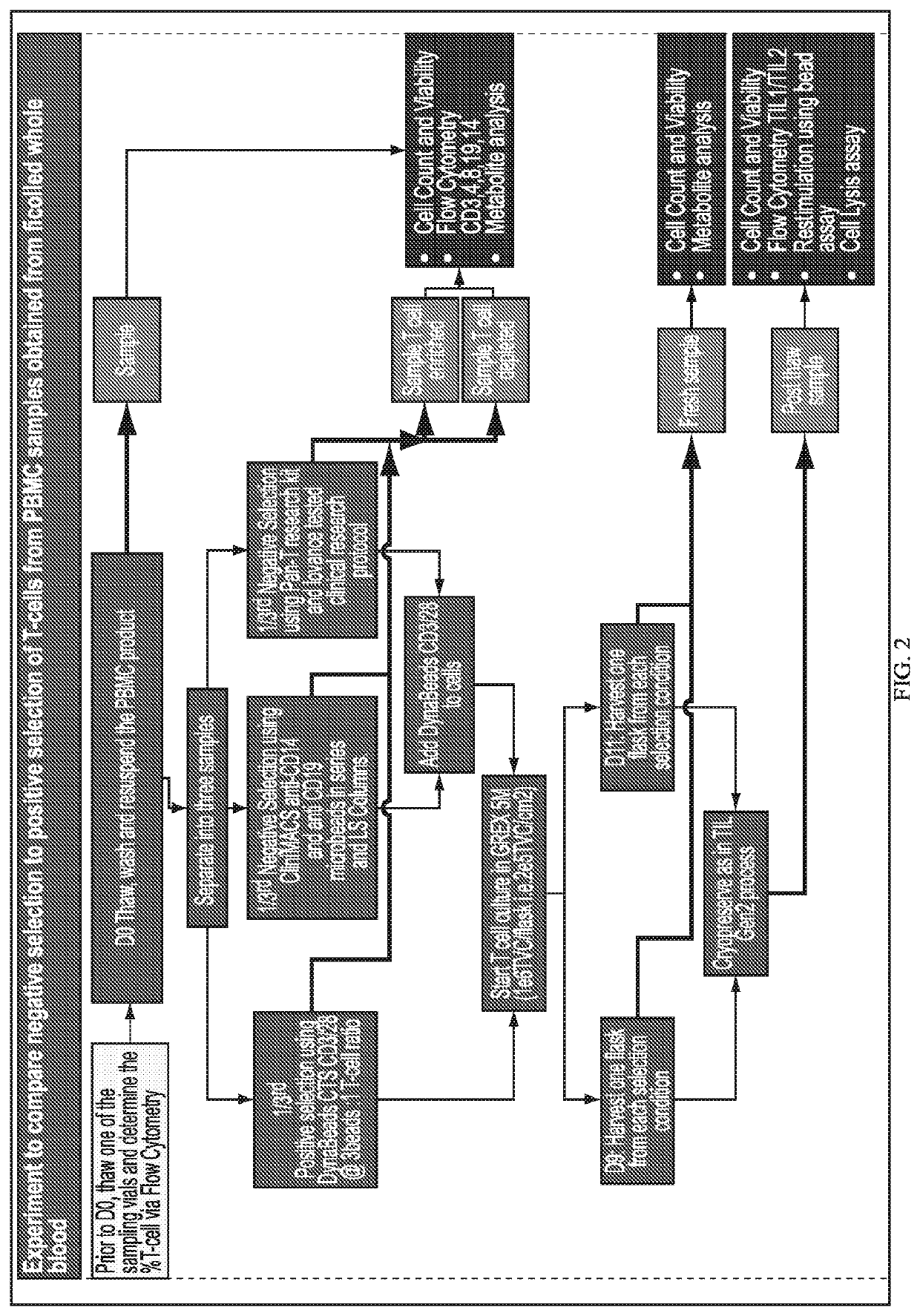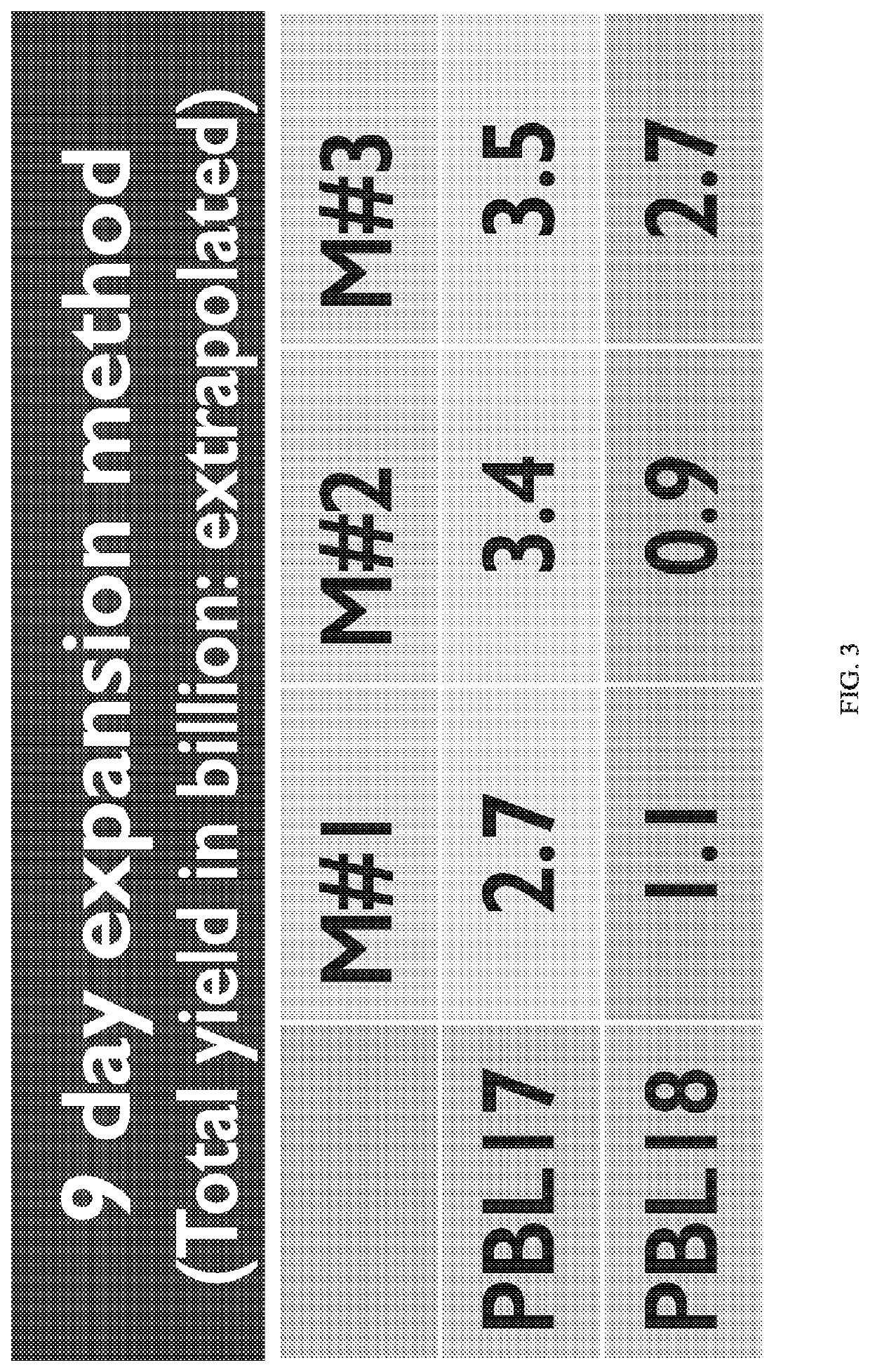Expansion of Tumor Infiltrating Lymphocytes From Liquid Tumors and Therapeutic Uses Thereof
a technology liquid tumors, which is applied in the field of tumor infiltrating lymphocyte expansion from liquid tumors and its therapeutic use, can solve the problems of poor results of earlier approaches to expansion of tumor infiltrating lymphocytes from b cell lymphomas
- Summary
- Abstract
- Description
- Claims
- Application Information
AI Technical Summary
Benefits of technology
Problems solved by technology
Method used
Image
Examples
example 1
Selecting and Expanding PBLs from PBMCs Obtained from CLL Patients
[0571]PBMCs are collected from patients (optionally pretreated with an ITK inhibitor such as ibrutinib) and either frozen prior to use or used fresh. Enough volume of peripheral blood is collected to yield at least about 400,000,000 (400×106) PBMCs for starting material in the method of the present invention. On Day 0 of the method, IL-2 at 6×106 IU / mL is either prepared fresh or thawed, and stored at 4° C. or on ice until ready to use. 200 mL of CM2 medium is prepared by combining 100 mL of CM1 medium (containing GlutaMAX®), then diluting it with 100 mL (1:1) with AIM-V to make CM2. The CM2 is protected from light, and sealed tightly when not in use.
[0572]All of the following steps are performed under sterile cell culture conditions. An aliquot of 50 mL of CM2 is warmed in a 50 mL conical tube in a 37° C. water bath for use in thawing and / or washing a frozen PBMC sample. If a frozen PBMC sample is used, the sample is...
example 2
Alternative Method for Selecting and Expanding PBLs from PBMCs Obtained from CLL Patients
[0581]For the expansion of PBLs from PBMCs obtained from CLL patients or patients with other diseases described herein, including CLL patients having previously received ibrutinb or an ITK inhibitor or with ibrutinib-relapsed or refractory CLL, the following procedure may be used. All steps require the use of sterile technique in a biological safety cabinet (BSC) or similar enclosure.
[0582]On day 0, prepare 6×106 IU / mL IL-2. If aliquots are available, thaw a fresh aliquot and leave it at 4° C. in refrigerator or on ice until ready to use. Prepare small volume (e.g. 200 mL) of CM2 media. First prepare 100 mL of CM1 media, substituting GlutaMAX for glutamine in the procedure, then dilute it 1:1 with AIM V to make CM2. While performing this experiment, keep the CM2 warm in a 37 ° C. water bath, protected from light, with cap closed tightly. When it is being used in the hood, do not leave the cap of...
example 3
Full-Scale Manufacturing Process of PBL from Cryopreserved PBMCs of CLL Patients
[0589]This example illustrates an embodiment of a full scale manufacturing process for autologous PBL product for treatment of patients with CLL or other hematological malignancies. The experiments are performed on three cryopreserved PBMC samples obtained from different CLL patients who were treated with ibrutinib. All open manipulations of cell products take place within a Biosafety Cabinet in an ISO5 environment.
[0590]The materials in Table 3 are used in the process:
TABLE 3Materials used in an exemplary embodiment of a PBLmanufacturing process.MaterialManufacturer / VendorCatalogue #CTS DynabeadsLife Technologies43500D(CD3 / CD28)DNase-I GMP 4kURoche3724751103Human Serum Octapharma68982-0643-01Albumin 25%DPBS no Calcium noSigma or equivalentD8537MagnesiumGRex 100MCS flasksWilson-Wolf81100-CSPlasma-Lyte ABaxterJB2554Cryostor 10BioLife210102CliniMACS CD19Miltenyi130-019-301microbeadsCliniMacs DTS tubingMilt...
PUM
| Property | Measurement | Unit |
|---|---|---|
| molecular weight | aaaaa | aaaaa |
| molecular mass | aaaaa | aaaaa |
| molecular mass | aaaaa | aaaaa |
Abstract
Description
Claims
Application Information
 Login to View More
Login to View More - R&D
- Intellectual Property
- Life Sciences
- Materials
- Tech Scout
- Unparalleled Data Quality
- Higher Quality Content
- 60% Fewer Hallucinations
Browse by: Latest US Patents, China's latest patents, Technical Efficacy Thesaurus, Application Domain, Technology Topic, Popular Technical Reports.
© 2025 PatSnap. All rights reserved.Legal|Privacy policy|Modern Slavery Act Transparency Statement|Sitemap|About US| Contact US: help@patsnap.com



